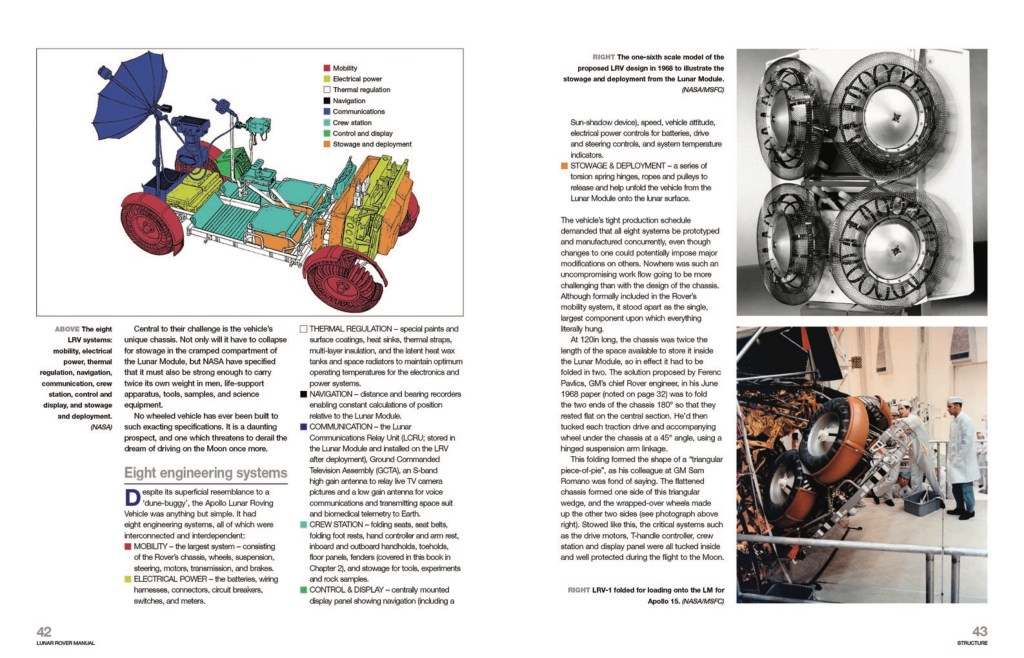The Complete NASA Lunar Rover Manual: Explore The Moon Like Never Before With Our Step-by-Step Guide!
Introduction
The NASA Lunar Rover Manual is a comprehensive guidebook that details the usage, maintenance, and repair of the lunar rovers that NASA used during the Apollo missions. The manual was created to ensure that astronauts operating the rovers had all the necessary information to successfully maneuver the vehicle on the lunar surface. The manual outlines the design, operation and maintenance of the rovers, making it a valuable resource for any lunar rover enthusiast.
Overview
The NASA Lunar Rovers were used on the Apollo 15, 16, and 17 missions between 1971 and 1972. The vehicles were designed to carry two astronauts and their equipment across the lunar surface. The Lunar Rovers were battery-powered and had a range of up to 57 miles, allowing astronauts to travel further from their landing site than ever before.
2 Picture Gallery: The Complete NASA Lunar Rover Manual: Explore The Moon Like Never Before With Our Step-by-Step Guide!


Brand and History
The Lunar Rovers were designed and built by Boeing and General Motors, under contract from NASA. The idea for a lunar vehicle was first proposed in the early 1960s, but it wasn’t until the late 1960s that NASA began the formal design process. The Lunar Rovers were a critical component of the Apollo missions, allowing astronauts to explore the lunar surface in greater detail than ever before.
Body Paragraphs
What is the NASA Lunar Rover Manual?

Image Source: haynes.com
The NASA Lunar Rover Manual is a detailed guidebook that provides information on the design, operation, and maintenance of the Lunar Rovers used during the Apollo missions. The manual was created to ensure that astronauts had all the necessary information to safely operate the rovers on the lunar surface.
Who can Benefit from the Manual?
Anyone interested in the Lunar Rovers and their history will find the NASA Lunar Rover Manual to be a valuable resource. The manual provides detailed information on the design and operation of the rovers, as well as maintenance and repair procedures. It is also a great resource for model builders and collectors looking to create accurate replicas of the Lunar Rovers.
When and Where was the Manual Created?
The NASA Lunar Rover Manual was created during the Apollo program in the late 1960s and early 1970s. The manual was created by NASA engineers and was used by astronauts during the Apollo 15, 16, and 17 missions. Today, the manual is available online and can be accessed by anyone interested in learning more about the Lunar Rovers.
Why is the Manual Important?

Image Source: haynes.com
The NASA Lunar Rover Manual is important because it provides a detailed look at the design, operation, and maintenance of the Lunar Rovers. The rovers were a critical component of the Apollo missions, and the manual provides valuable insight into how they functioned and were operated. The manual is also important for model builders and collectors, as it provides a wealth of information on the design and construction of the rovers.
How to Use the NASA Lunar Rover Manual
The NASA Lunar Rover Manual is divided into several sections, each of which covers a different aspect of the Lunar Rovers. The manual begins with an overview of the rovers, including their design and operation. The manual then goes into greater detail on various features of the rovers, such as the controls, instruments, and seating capacity. Finally, the manual provides information on maintenance and repair procedures.
FAQ: Frequently Asked Questions
What is the seating capacity of the Lunar Rover?
The Lunar Rover was designed to carry two astronauts and their equipment.
What is the range of the Lunar Rover?
The Lunar Rover had a range of up to 57 miles on a single battery charge.
What kind of terrain can the Lunar Rover handle?
The Lunar Rover was designed to handle a variety of terrain, including steep slopes and rough terrain.
Transition Paragraphs
Model
The NASA Lunar Rover was a unique vehicle that was designed specifically for the Apollo missions. The vehicle was battery-powered and had a range of up to 57 miles.
Features and Options
The Lunar Rover was equipped with a variety of features and options that allowed astronauts to safely navigate the lunar surface. These features included a navigation system, a payload carrier, and a communications system.
Controls and Instruments
The controls and instruments on the Lunar Rover were designed to be easy to use, even while wearing bulky space suits. The vehicle was equipped with a steering wheel, hand controllers, and a variety of gauges and meters to monitor vehicle performance.
Interior and Instructions
The interior of the Lunar Rover was designed to be comfortable and functional for the astronauts. The vehicle was equipped with air conditioning and a heating system to maintain a comfortable temperature. The vehicle also included storage compartments for equipment and supplies.
Service and Repair
The Lunar Rover was designed to be easy to maintain and repair on the lunar surface. The vehicle was equipped with a variety of tools and spare parts to allow astronauts to make repairs as needed.
Illustration/Example Paragraphs
Facilitates Accessibility
The Lunar Rover was designed to allow astronauts to explore the lunar surface in greater detail than ever before. The vehicle’s battery-powered design and range of up to 57 miles allowed astronauts to travel further from their landing site than ever before.
Technologies and Functions
The Lunar Rover was equipped with a variety of technologies and functions that allowed astronauts to safely navigate the lunar surface. These technologies included a navigation system, a communications system, and a payload carrier.
Benefits and Specifications
The Lunar Rover provided a number of benefits to the Apollo missions, including greater mobility for astronauts and the ability to explore a wider area of the lunar surface. The vehicle had a top speed of 8 mph and could carry up to 1,080 pounds of equipment and supplies.
Comparison/Contrast Paragraphs
Engine Options
The Lunar Rover was battery-powered, making it a unique vehicle among the other rovers used during the Apollo missions. The battery-powered design allowed for greater mobility and range, but also required careful management of the vehicle’s power supply.
Transmission Types
The Lunar Rover did not have a traditional transmission, but instead used a series of motors and gearboxes to drive the wheels. This design allowed for greater control over the vehicle’s speed and direction, but also required careful monitoring of vehicle performance.
Chassis Design and Dimensions
The Lunar Rover had a unique chassis design and dimensions that were specifically tailored to the lunar environment. The vehicle’s dimensions were 10 feet long, 6 feet wide, and 3 feet high, and the chassis was designed to be lightweight and durable.
Conclusion
The NASA Lunar Rover Manual is a valuable resource for anyone interested in the history of the Lunar Rovers. The manual provides detailed information on the design, operation, and maintenance of the rovers, making it a valuable resource for model builders and collectors. The Lunar Rovers were a critical component of the Apollo missions, and the manual provides valuable insight into how they functioned and were operated. Overall, the NASA Lunar Rover Manual is a must-have resource for any lunar rover enthusiast.
This post topic: Manual



